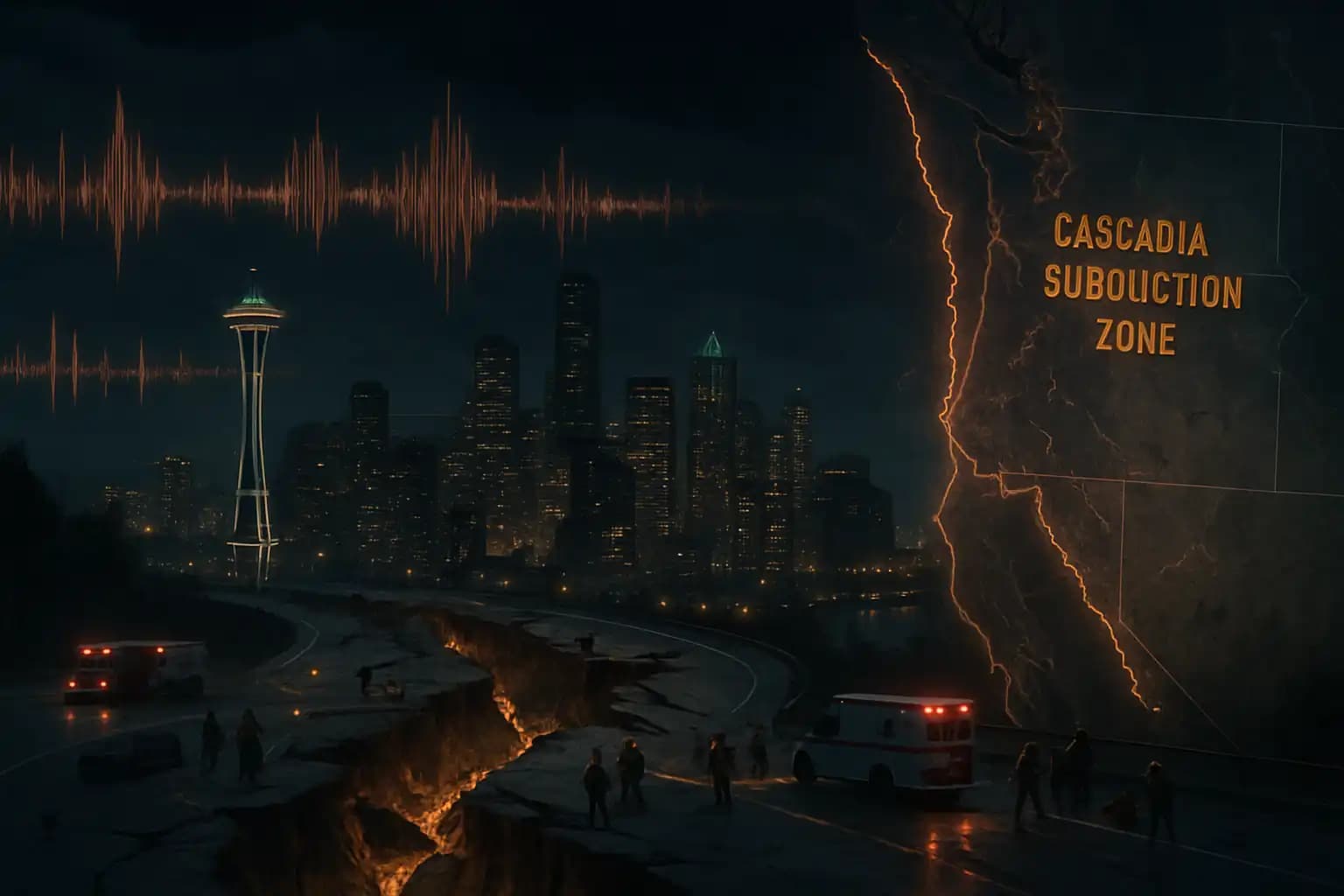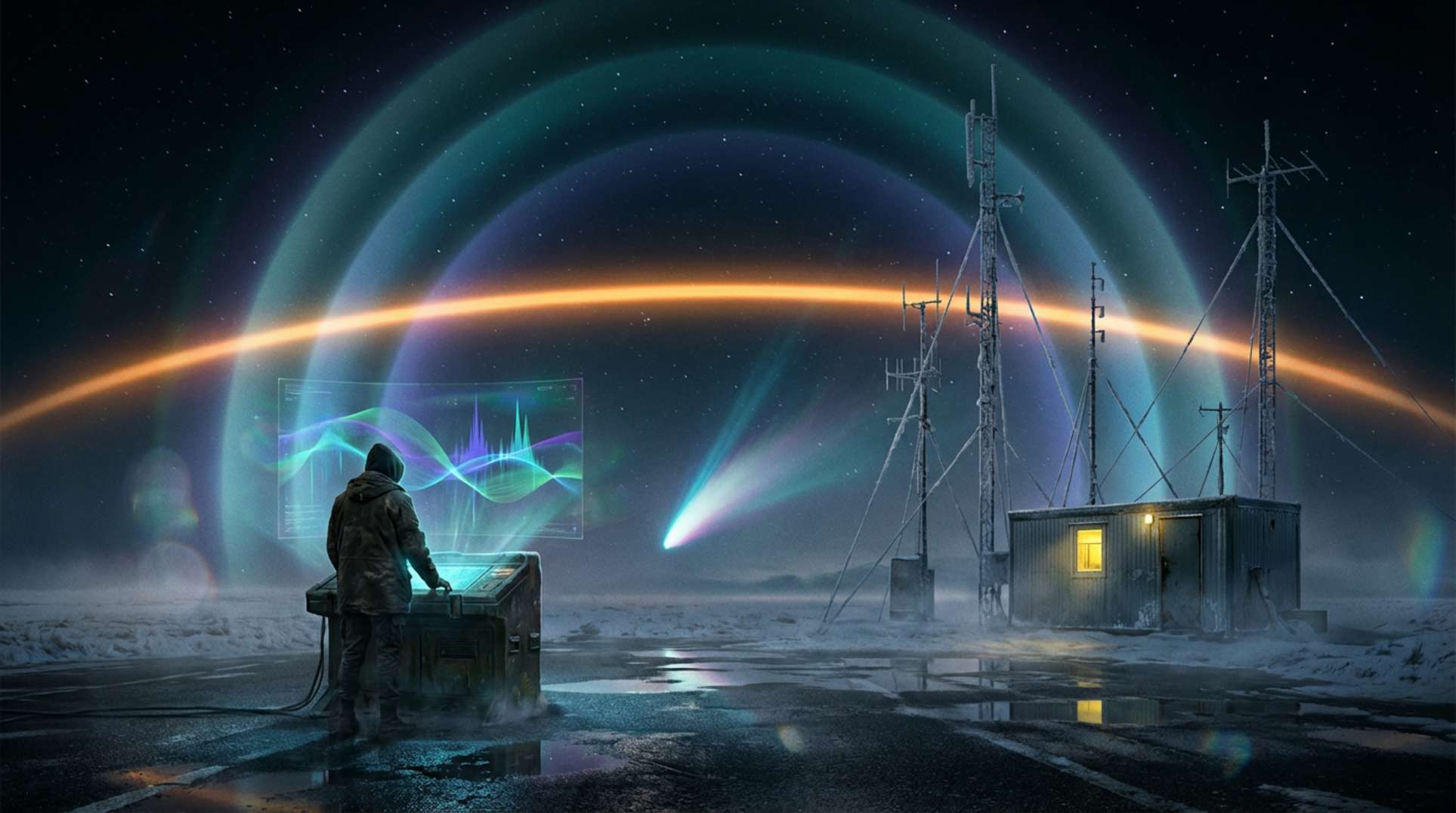The Pacific Northwest has a rebellious streak, demonstrated by 7,200 earthquakes rattling the region in just one month. Local scientists and geologists no longer just measure tremors; they observe tectonic plates engaged in an ancient conflict. This clash could, any year now, roll snake-eyes on civilization. Residents from Portland to Seattle whisper “Cascadia Subduction Zone” like an urban legend—one with real teeth.
This isn’t the first time the region has faced seismic anxiety, but this surge, tracked by agencies like the Washington Department of Natural Resources and Pacific Northwest Seismic Network, stands out in scale and frequency. Each tremor tells a tectonic story millions of years in the making, possibly marking the opening chapters of the next continental cataclysm.
Cascadia Subduction Zone: The Giant Beneath Our Feet
The Cascadia Subduction Zone spans over 600 miles, stretching from northern Vancouver Island to California’s edge. It’s a convergent boundary where the Juan de Fuca Plate dives beneath the North American Plate, leading to relentless seismic swarms and megaquakes of 9.0 or greater. According to Wikipedia’s seismic deep dive, quakes here can last up to 7 minutes, producing tsunamis nearly 100 feet high. The geology reads like an apocalypse script, a theme reflected in reports about geological instability and the near future.
If you think this risk is just theoretical, reconsider. Ghost forests, ancient sand layers, and tribal oral histories recount a massive earthquake in 1700 that drastically altered the coastline. That event remains a stark reminder of nature’s ability to unleash swift devastation.
What’s Driving the Recent Earthquake Swarms?
The recent influx of quake activity has prompted mild panic in the Pacific Northwest—and for good reason. Swarms aren’t just alarming; they’re clusters of minor-to-moderate earthquakes, signaling something worse to come. Studies from Oregon State (see this tectonic overview) identify three main earthquake types: shallow crustal, deep intraplate, and massive megathrust events. All connect closely to plate tectonics, making each uptick in activity a red flag for anyone living above this boiling cauldron.
These tectonic tantrums echo warnings from disaster risk reports, including existential threats from unforeseen directions and seismic shifts described in various science exposés. Even preparations for cosmic disruptions, like solar storm survival guides, seem trivial compared to the potential destruction here.
‘The Big One’—Science, Myths, and Public Paranoia
The specter of “The Big One”—a megathrust earthquake on the Cascadia Subduction Zone—casts a shadow over every tremor. The latest New Yorker feature on Cascadia reveals a chilling truth: the region remains vastly unprepared, with infrastructure at risk of collapse within minutes. Models from the Virginia Tech research group warn of secondary disasters like extensive coastal flooding and landslides. Misinformation and urban legend intermingle here, much like the speculation that drove shocking confessions from Vice-era stories and the tales of mysterious “shadow people” in uncertain workplaces (see this investigation).
The narrative of the Big One isn’t solely about fear. It’s about science, preparation, and the harsh truth that each warning sign—such as rising quakes—calls for attention, not alarm. As communities race to prepare, they face a delicate balance: distinguishing fact from fear-driven fiction.
Preparing for Catastrophe: Science, Civic Response, and Survival
This unprecedented earthquake swarm has moved disaster mitigation from theory to urgent reality. Emergency kits, communication drills, and evacuation plans are under scrutiny. Authorities and researchers advise households to prepare to go off-grid, echoing the vigilance urged by studies on everything from demographic uncertainty to the mystery of unexplained creatures (see this Alberta encounter).
This risk ecosystem isn’t new, but it feels more urgent as societies realize modern life teeters on restless plates. Whether you’re an experienced prepper or a casual resident, the message is clear: observe the signals, trust the science, and act before the ground shifts. For the latest updates, survival strategies, and the quirkiest earthquake lore, visit Unexplained.co. When the ground begins to dance, you’ll want every insight available.





